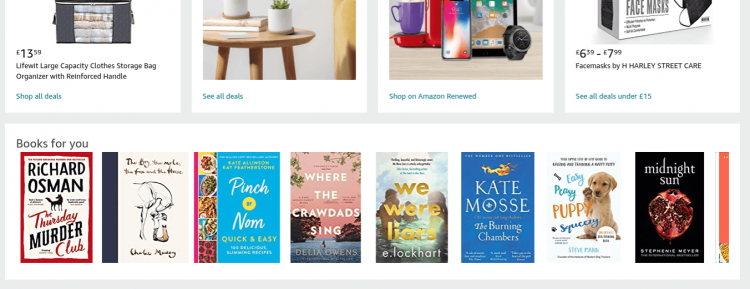Dynamic Content
Contents
Definition
Dynamic content is a type of online copy which has the ability to change based on the characteristics of the individual who is viewing the content. This dynamic content uses information about the user - based on data collected about their user behavior - in order to provide adapted content which is predicted to be the best fit for them.
Elements of dynamic content can be included within a site page or an email campaign. This area of content is flexible and different content will be seen by different users. Marketers can use this strategy to create intuitive, personalized content on site pages or marketing materials.
By incorporating dynamic content into online offerings, marketing campaigns can be made more engaging, and so will be more likely to be successful.
The data that is used to shape dynamic content includes a user’s behavior during a visiting session to a web page, their characteristics (such as age or gender), their geographical location, knowledge of their interests, or predictions about their preferences.
Dynamic content is also known as adaptive content and can exist as text, videos, images or audio. This user-specific content is generated instantly so that the viewer sees this at the same time as the rest of the static content.
Examples of dynamic content
Dynamic content can be included within a number of different pieces of online marketing. The intention behind this strategy is to make customers feel as though the company is reaching out to them personally. In addition, these personally tailored recommendations help make the need for a user to search for a product redundant. As a result, this will make their customer journey easier, and so it is more likely that they will make a purchase with the company.
To these effects, dynamic content could be used in any of the following ways:
- Including the user’s name or other personalization fields in an email campaign
- Including personally tailored adverts or offers in email newsletters
- Creating offers and adverts that are specific to a user’s viewing history
- Recommending products based on the customer’s previous purchases or their viewing history
- Welcoming a user to the website by including their name in the content
- Including an advert of your company in external websites
- Providing recommendations based on the user’s previous searches
- Providing offers that are specific to the user’s location
- Creating more advanced, user-specific pop-ups

Above, you can see an example of dynamic content featured on Amazon, where the site has offered the visitor recommendations for books that they may wish to purchase, based on previous searches or purchases that they have made.
How to create dynamic content
A database of customer information can be used to create these examples of dynamic content. In order to incorporate unique customer information, a site developer would then need to insert this data field into the content by using a coding language, such as PHP.
In order to create dynamic content which features personalized information, you would need to create a database that contains information about each of your customers.
The database could potentially gather customer data covering a variety of different areas, including a visitor’s name, age, gender, email, occupation, the number of purchases they have previously made with your company, products that they have previously shown interest in, location, and so on.
This database would then be referred to by the system to fill in the gaps in the content.
Alternatively, you could also insert a dynamic content field into your static content by using a specialist piece of software. This would then generate this dynamic content for you. Once the field for the dynamic content has been created, it will undertake this process automatically - it does not need to be revisited or regularly maintained by the web developer.
The difference between dynamic content and static content
Static content is any online content that has not been personalized. Static content uses HTML files to create fixed content, and the majority of website or email content consists of static content. Although it is far easier to implement onto a web page or in an email, it cannot be adapted or personalized to different users.
However, dynamic content is designed to be indistinguishable from static content from the user’s perspective. Dynamic content normally sits alongside static content seamlessly. The two types of content are normally used together, as static content is easier to create, but dynamic content provides a more intuitive and personal experience for the consumer.
Importance for online marketing
Dynamic content provides marketers with a great opportunity to connect with their target audience. By providing customized content to each customer, this can influence the behavior that they demonstrate in a session on your website. This is because creating a direct engagement with the customer, or using recommendations to make their experience of your site easier is a great way to improve user experience.
The implementation of dynamic content brings the two-fold benefit of increasing visitor engagement, while also ensuring that the content they view is relevant to them. This will create a more intuitive shopping experience for your consumers.
Furthermore, the implementation of dynamic content can bring significant benefits to a website’s online marketing strategy including, for example, trends such as a reduced bounce rate, a higher rate of engagement with call to actions (CTAs) featured on web pages, and a boost to the conversion rates that your site achieves.
Related links
- https://blog.hubspot.com/marketing/marketing-personalization-examples
- https://blog.hubspot.com/marketing/data-personalize-marketing-li
- https://moz.com/blog/homepage-personalization
Similar articles
| About the author |
 |